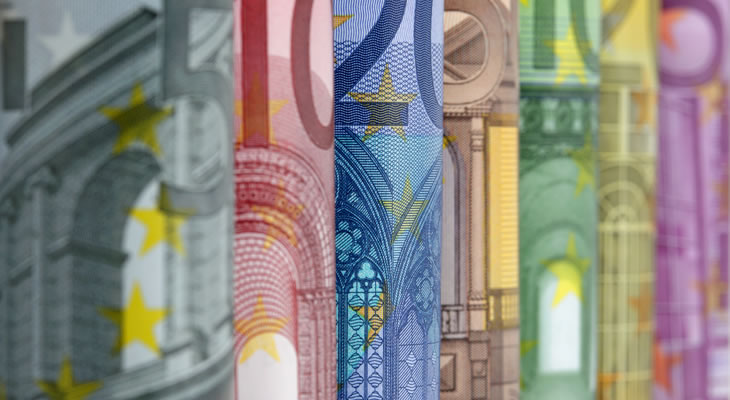The Pound (GBP) has tumbled against the (Euro) on 27th April, with the GBP/EUR exchange rate dropping by -0.9%.
This collapse in Pound trader confidence was down to poor UK GDP growth rate estimates for Q1 2018.
The preliminary figures showed a slump to the slowest pace of growth in five years, behind which was a -3.3% construction sector slowdown.
Worryingly, March’s snowstorms were only thought to have had a ‘limited’ negative effect, meaning that wider factors may be harming the economy.
(Last updated 27th April, 2018)
The Pound to Euro exchange rate (GBP/EUR) has ticked higher on the afternoon of 26th April, following the European Central Bank’s (ECB) meeting.
The general message from bank officials has been a cautious one, with ‘slow and steady’ being the main summation of Eurozone economic performance.
ECB President Mario Draghi has done little to boost demand for the Euro, which has caused the single currency to dip against the Pound.
Despite highlighting above-trend growth, Mr Draghi has also reiterated that monetary stimulus will continue and interest rates will be unchanged.
(First published 26th April, 2018)
Risk of Pound to Euro (GBP/EUR) Exchange Rate Turbulence on Bank of England (BoE) Remarks
The Pound (GBP) has been steady against the Euro (EUR) on 26th April, but remains at risk of a decline when two Bank of England (BoE) policymakers speak on 27th April.
These will be BoE Governor Mark Carney, as well as Chief Economist and Executive Director of Monetary Analysis and Statistics Andy Haldane.
Both men have the potential to trigger major Pound to Euro (GBP/EUR) exchange rate movement, assuming that they discuss UK monetary policy.
Mr Carney triggered a Pound devaluation recently when he played down the idea of a UK interest rate hike coming as soon as May.
On the other hand, despite being historically cautious Mr Haldane has more recently adopted a positive outlook and is considered by some economists to be ‘hawkish’.
The best-case scenario for Pound traders will be Mr Carney taking a U-turn and backing imminent interest rate hikes, along with similar sentiment from Mr Haldane.
Will Growth in UK PMI Readings Trigger Pound to Euro (GBP/EUR) Exchange Rate Rise?
Looking further ahead, the Pound (GBP) could advance against the Euro (EUR) during the coming week, specifically from 1st May to 3rd May.
UK PMI readings, covering the manufacturing, construction and services sectors in April, will be released over the three days.
In a moment of premature optimism, the results are all tipped to show growth compared to previous figures.
Higher economic activity as shown by PMI data could trigger a Pound to Euro exchange rate (GBP/EUR) rally, as it would reverse the recent slowdowns seen in the UK.
Euro to Pound (EUR/GBP) Exchange Rate Volatility Forecast on ECB Press Conference
The next movement of the Euro (EUR) against the Pound (GBP) will come this afternoon, when policymakers at the European Central Bank (ECB) meet.
The officials will consider any adjustments to interest rates or bond-buying; these talks will be followed by a press conference from ECB President Mario Draghi.
Mr Draghi’s remarks often provoke fluctuations in the value of the Euro, so his tone will be an especially important factor during the afternoon.
In brief, if Mr Draghi’s tone is overly cautious and suggests no immediate adjustment to policy measures then the Euro could drop sharply against the Pound.
Risk of Greater EUR/GBP Exchange Rate Losses on Falling Eurozone Confidence
There may also be Euro to Pound (EUR/GBP) exchange rate losses before the end of the week, when a range of Eurozone economic confidence stats come out on 27th April.
The readings, which will include measures of economic sentiment, business confidence and consumer confidence, are all expected to decline during April.
As such, any Euro losses generated by this afternoon’s ECB event could be extended if it looks like confidence levels have taken a hit when 27th April’s data is released.


Comments are closed.